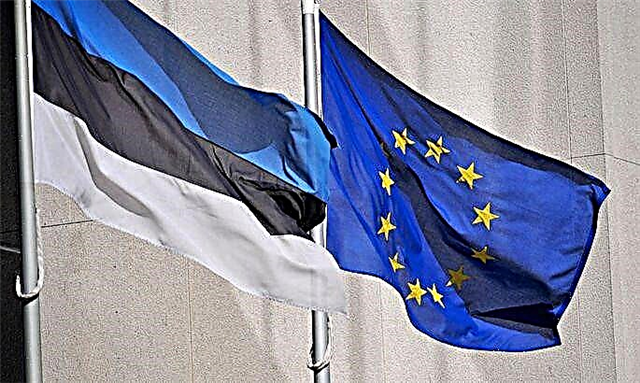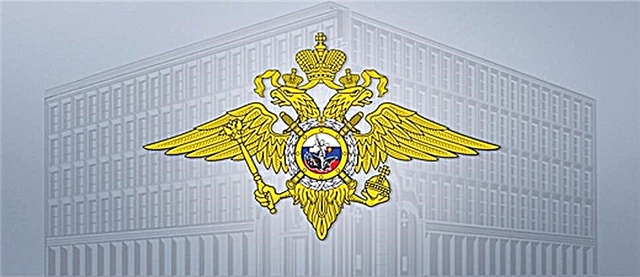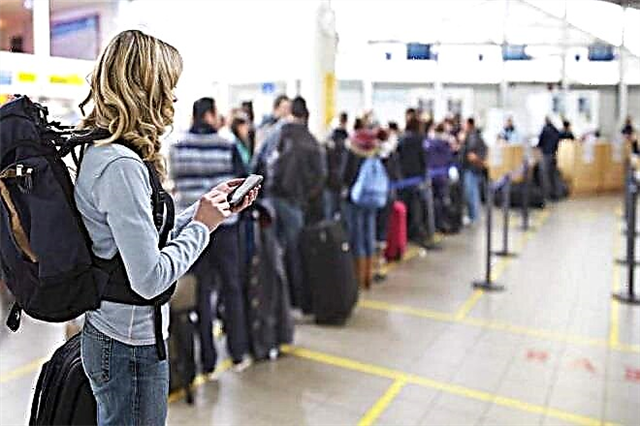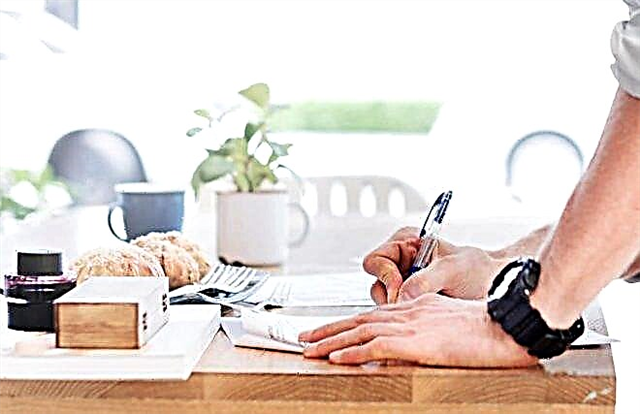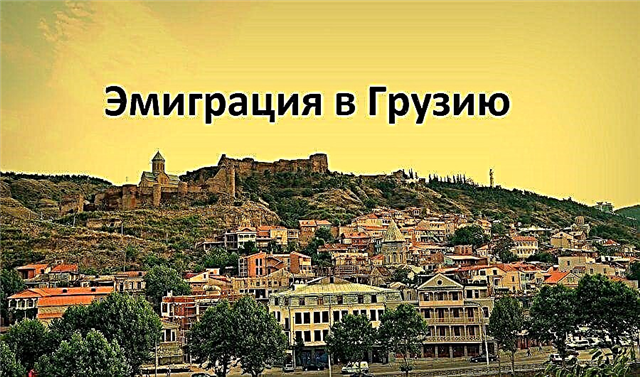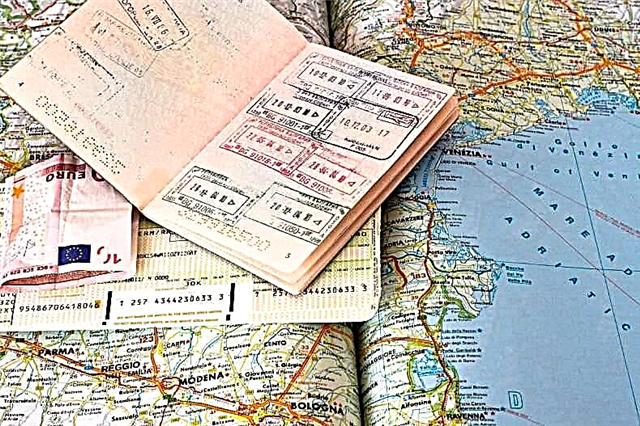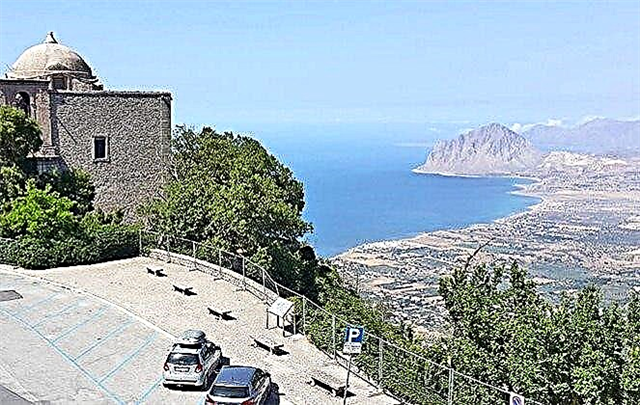A trip to Italy by car will reveal all the delights of this beautiful country without the need to buy plane tickets, other public transport, and beautiful roads and landscapes will greatly enhance the positive emotions from the trip. On the way, there is something to see, what to try and be sure to buy at least once in your life. It is your own car that will allow you to go everywhere, to be in time for everything and not to miss anything.

Why go to the Apennines
The homeland of stunning cuisine, perfumes and clothing is interesting even without unique resorts, world-famous museums, historical and architectural monuments, and in fact almost every stone here is a UNESCO heritage. A road trip in Italy will allow you to see many of them with your own eyes.
- In Venice, you should get acquainted with the Grand Canal, St. Mark's Cathedral and not forget about the world-famous carnival and gondolas.
- You cannot drive past the "falling" bell tower of the Cathedral of Santa Maria Assunta in Pisa or the Vatican.
- The height and length of the nave of St. Peter's Basilica is mind-boggling.
- In the Papal Palace, you can admire the frescoes of the great Raphael, and in the Sistine Chapel, bow your heads to the genius of Michelangelo.
- In the Pantheon in Rome, it is easy to feel the greatness of the Empire, but it is difficult to believe that this splendor of marble columns and a dome with a Heavenly All-Seeing Eye was created by people, not gods.
- You should definitely see the Forum, under the Black Stone of which, according to legend, Romulus himself is buried.
- And, of course, the Colosseum is a grandiose amphitheater that embodies the power of an empire that no longer exists today.
- Milan Cathedral was built for 427 years and is considered the largest Gothic temple. There is a golden statue of the Madonna, the patroness of the city, and the nail with which Christ was nailed is kept above the altar.
- You can only visit Florence because of the Uffizi Gallery, a mecca for art lovers.
Hadrian's Villa in Tivoli, Pompeii, Verona, Romeo and Juliet, Rimini resorts - the list of must-see places is endless. You need to be in time to visit everywhere, but what is the best way to do this, if not to go on your own in your own car?
What is required for the trip
First of all, preparation for a road trip includes obtaining documents:
- Foreign passport.
- Schengen visa.
- Car documents.
- Medical insurance.
- "Green Card" (international car insurance).
- International driving license (IDP), if there is no new national license.
- Power of attorney for the right to drive if the car belongs to another person.
- Confirmation of hotel reservations along the route.
 In addition, when traveling abroad, representatives of a foreign state have the right to ask for confirmation of the sufficiency of finances. A printout of an account statement or bank card statement will be required.
In addition, when traveling abroad, representatives of a foreign state have the right to ask for confirmation of the sufficiency of finances. A printout of an account statement or bank card statement will be required.
Visa to Italy by car is also issued at the Italian Visa Application Center. It is recommended to start the procedure three months in advance.
Schengen can be ordered from the Polish diplomatic office if a transit visa is chosen, since Poland is the first Schengen country on the way to Italy.
You can buy medical insurance using one of the services, for example, Cherehapa.ru, and you can get a Green Card right on the border with Poland - it's even cheaper.
An IDP can be obtained in a day at the MREO at the place of residence. Advance rental of hotel rooms is required for each night of stay in the Schengen area.
It is advisable to draw up a detailed itinerary through the cities of Italy and other countries along the route, indicating hotels and dates of stay.
Italian customs
The border crossing procedure, necessary documents, crossing rules are identical for all Schengen countries. The line at the border is always the same on weekdays, holidays and weekends, and the corresponding services work around the clock. Signs and signs make it easy to understand the order of passage of the corridors, the choice of which is determined by the contents of your wallets and trunks.
Italian customs rules are no different from those adopted in the EU:
- import / export of currency is not limited, but amounts over 10 thousand euros must be declared;
- persons over 17 years of age are allowed to import up to 1 liter of spirits, up to 200 cigarettes, 50 cigars or 250 g of tobacco duty-free;
- import of coffee and tea is allowed in the amount of 500 and 100 g, respectively;
- You can import up to 50 ml of perfume and 250 ml of eau de toilette, as well as personal goods and souvenirs at the rate of up to 175 euros per adult and up to 90 euros per child under 15 years old.
When entering from the territory of the EU member states, the duty-free rate of import of goods has been increased. The import of drugs, narcotic drugs without a prescription, cold and firearms, ammunition, explosives, pornography, plants, flowers with soil, meat and dairy products is prohibited.
There is no ban on baby food and special preparations for people with chronic diseases. Food and medicine must be packed, and their weight must not exceed 2 kg. Our recommendation is not to travel with animals, as it will take a lot of paperwork.
Foreign citizens are not allowed to enter Italy or the Schengen area:
- declared ineligible in one of the states of the zone;
- recognized as dangerous to public order and safety;
- convicted of drug trafficking, sexual violence, complicity in illegal emigration, involvement of minors in illegal activities.
After the control, the border guards make a mark in the passport indicating the date and place of the border crossing.
Car requirement for travel to Italy
The machine must be technically sound and equipped with:
- a first-aid kit of the European standard;
- emergency stop sign;
- workers fire extinguisher;
- flashlight;
- vests (must be in the passenger compartment), seat belts, spare fuses, bulbs and a tow rope.
It is advisable to visit the service station in a month or two and make a full diagnosis. The headlights should work correctly, and the chassis and engine should not rattle.
There should be no tinting, except for the factory one, and there should be no stickers on the glasses. Even the transport of radar detectors is prohibited.
Winter tires are recommended between 1 October and 15 April (studded tires are banned in the EU).
It is important not to forget to update the maps in the navigator. If not, you should install an app on your smartphone (for example, Sygic Navigator or Mapsme). In this case, you also need to take care of the mobile Internet.
Route selection
The route to the EU border is selected based on the location of the starting point. In most cases, you will have to travel through Poland. From the northwestern part of Russia, you can take a ferry and start your journey across Europe from Germany.
We leave from Moscow
Most often, Russians start their journey to Italy by car from Moscow or via Moscow. You can get to the border with Europe:
- Through the Baltic states, the Kaliningrad region and Poland.
- Through Belarus and Poland.
The first route is long and is chosen only to kill two birds with one stone - to see the Baltics and Kaliningrad at the same time.
The second is optimal. From Moscow, you need to go to the M-1 highway in the direction of Smolensk, and then along the E-30 move to Minsk and Brest. It will take one day.
But then there are much more options:
- Through Poland, the Czech Republic and Austria - four days' journey with three stops. To Krakow from Moscow 1500 km, to Vienna another 500 km, and from there to Venice and Milan only 5 hours drive.
- Via Warsaw with stops in Berlin and Munich ─ four days.
- Via Slovakia, Hungary and Slovenia with stops in Lublin, Krakow and Budapest ─ just over four days.
Travel from St. Petersburg
A trip to Italy by car from St. Petersburg can be more enjoyable if you go through Finland or Estonia, put your car on the Finnlines ferry in Helsinki or Tallinn and in about a day find yourself in Travemunde (Germany), from which the Italian border is about 1,100 km away.
Also from St. Petersburg there is the possibility of leaving Russia by ferry through Sweden or Denmark. In this case, it is worth considering that the Storebaltsbroen and Oresundsbron bridges are paid (32 and 43 euros, respectively).
Then you can go through Vienna or Munich. If you move through the Baltic States or Belarus, the path will be similar to traveling from Moscow.
Popular Italian auto routes
 Car routes in Italy need to be planned in advance, although the complete freedom that your car provides allows you to change directions and stops at any time. To inspect the country, and a month is not enough.
Car routes in Italy need to be planned in advance, although the complete freedom that your car provides allows you to change directions and stops at any time. To inspect the country, and a month is not enough.
If you have only 10 days at your disposal, you will have to choose what you would like to see first. Get a travel guide if you don't know where to start.
We recommend this sightseeing tour: Milan ─ Florence ─ Pisa ─ Bologna ─ Parma ─ Ravenna ─ Venice ─ Rome ─ Naples. In every city you can stay for a night or two.
Europeans, who appreciate the beauty of the Italian landscapes, have a particularly popular route through Northern Italy to choose from:
- The S222 Via Chiantigiana, crossing Tuscany, will give you the chance to taste the real Chianti, produced only in this region, to visit nature reserves and medieval towns, castles and monasteries.
- The road around Lake Como in Lombardy near Milan will give you an unforgettable experience of one of the most beautiful lakes in Europe.
- The famous Grande Strada delle Dolomiti (Grande Strada delle Dolomiti) will allow you to enjoy beautiful views of the Alps, lakes, waterfalls and ancient cities.
In addition, the S163 highway is beautiful, which runs along the Amalfi coast in the Naples region along a mountain serpentine through lemon groves and ancient cities with an endless series of vineyards and beaches.
Italian traffic rules
Traffic rules in Italy are not without their peculiarities.
Permitted speed for cars / motorcycles:
- within the city limits - 50 km / h;
- outside the boundaries of settlements - 90 km / h;
- on the roads - 110 km / h;
- on highways - 130 km / h.
In conditions of reduced visibility, rain, fog, snow, the permitted speed is reduced by 20 km / h.
- Dipped beam is required for use outside of settlements, at the entrances to tunnels. On the circle, the cars on the ring have the advantage.
- All passengers are required to wear seat belts, and it is prohibited to transport children under 3 years old without a special restraint device.
- In the blood of a driver over 21 years of age and more than 3 years of experience, up to 0.05 ppm of alcohol is allowed.
- Talking on a cell phone while driving is prohibited.
- In the period from October 15 to April 15 in the north of the country, the use of winter tires is compulsory.
At night (from 22:00 to 7:00), already European fines for serious violations increase by a third. Can be levied on site ─ up to a quarter of the maximum value.
Parking features
There are few free parking lots in the centers of large cities, and evacuation is used for violations of the rules. Parking areas are divided into three types, indicated by different colors of the marking:
- Blue - paid. The payment method is indicated on the sign. A parking disc for time-limited parking lots (Disco Orario) is available from a tobacco shop (Tabbachi), a petrol station, a bank, and there are parking lots with free start times. This is usually written on the parking signs. For example, 30 minutes is free. If you get up on this, be sure to indicate the time when you got into the parking lot.
- White is free.
- The yellow parking in Italy is for disabled people and delivery vehicles.
A green marking is also possible, indicating places where parking is prohibited on weekdays from 9.30 to 16.00.
The cost of parking is determined by the municipality. On average, it is 1-3 euros per hour or 15-25 euros / day.
Payment is made at parking machines. In underground parking, the calculation is carried out at the box office according to the actual time.
Italian road network
 Free roads in Italy are of very decent quality. As a rule, there is a free alternative for any paid one.
Free roads in Italy are of very decent quality. As a rule, there is a free alternative for any paid one.
Major highways are toll roads. The average fare is 7 euros per 100 km. To calculate the cost, you can use the official website of the country's road network.
There are several toll tunnels in northern Italy. One of the most popular is Mont Blanc, which costs about 45 euros one way.
Round trip on the panoramic Timmelsjoch High Alpine Road (open from July to October) costs 21 euros.
The country can be driven from north to south on the toll highway:
- on the east coast - for 70 euros;
- Western - for 60 euros.
A ferry to Sicily costs around 40 euros. There is a toll road in the northern part of the island through Palermo. The journey costs 10 euros.
Now about how to pay for roads. This is done by credit card or cash. At the entrance, you need to select the appropriate lane, stop, press the red button in the machine and pick up the ticket.
Payment is made at the exit on the biglietto lane. The ticket is inserted into the machine or handed over to the cashier, and the payment is made. A special feature ─ not all vending machines accept bills.
Fuel cost and types of refueling
The price of gasoline in Italy is one of the highest in Europe:
- a liter of gasoline costs 1.5-1.65 euros;
- diesel is priced at 1.47 per liter;
- gas price ─ 0.66 euros.
In cities, prices are lower than on highways, but only there are round-the-clock gas stations.
Our advice: refuel to capacity in Austria, where fuel costs are arguably the lowest in Europe.
Gas stations in Italy have two types of service:
- automatic ─ you will have to refuel yourself (marked with the inscription Self). At the entrance, you need to insert a bill into the machine (denominations of 10, 20 and 50 euros are accepted), after which you can get fuel for exactly the amount deposited. When paying by card, they can additionally block a significant amount on it - up to 100 euros. After one or three days it will be unblocked, but still unpleasant.
- with a live tanker (Servado or Servito) - the calculation is carried out after the fact at the checkout.
At a self-service gas station, a liter of fuel is about 10-20 cents cheaper.
Route optimization
Several life hacks will help to optimize the trip so as to get to Italy and back with minimal costs in the shortest possible time:
- An interactive map of checkpoints in Belarus will allow you to determine where there is less queue. Here you can see the queues. On the way back, the official website of the Polish Border Guard Service will help to cope with this task.
- Studying and recording the selected points of location of food outlets, parking lots and hotels on Google maps in the number of notes will help you plan your budget. A Google account is required. On the website of the outlet, you can familiarize yourself with prices, menus, user reviews while still at home. Coordinates can be entered directly into the navigator.
- There and back it is worth building different routes to see not only Italy.
 You will have to travel several thousand kilometers in a limited time. It's good if there is a second driver. Otherwise, you should not plan to stop for rest after a distance of more than 500 km, otherwise you will have to admire the Italian beauty only from the car window.
You will have to travel several thousand kilometers in a limited time. It's good if there is a second driver. Otherwise, you should not plan to stop for rest after a distance of more than 500 km, otherwise you will have to admire the Italian beauty only from the car window.
It is cheaper to eat and sleep in small towns.
Drive a small car ─ it's easier to park and drive through narrow streets.
If you have only a week excluding travel, go first to Venice, Rome and Milan.
Important phone numbers
If the car breaks down, you will have to go to the nearest service station or call the emergency service at 116. For this, there are free public telephones on the autobahns. Other emergency numbers:
- ambulance - 118;
- police - 112, 113;
- firefighters - 115;
- traffic information - 1518.
If you don't have a phone, you can contact a police officer. In the most extreme cases, you can call the Russian Embassy in the Italian Republic: +39 494-16-80, 494-16-81, 494-16-49.
Conclusions
A trip to Italy will be remembered for a long time. Not so much a difficult, long and expensive road, as a supply of impressions that will last for a lifetime. The main thing:
- prepare the necessary package of documents for the trip;
- find the most convenient route;
- successfully pass customs;
- remember the features of Italian traffic rules;
- stock up on money taking into account local gasoline prices;
- well, and of course, do not forget to upload the map of Italy to the navigator.
If you have carefully read the article, and nothing interferes with the desire to travel, feel free to hit the road. We are sure that then you will want to travel more than once.

 There should be no tinting, except for the factory one, and there should be no stickers on the glasses. Even the transport of radar detectors is prohibited.
There should be no tinting, except for the factory one, and there should be no stickers on the glasses. Even the transport of radar detectors is prohibited.